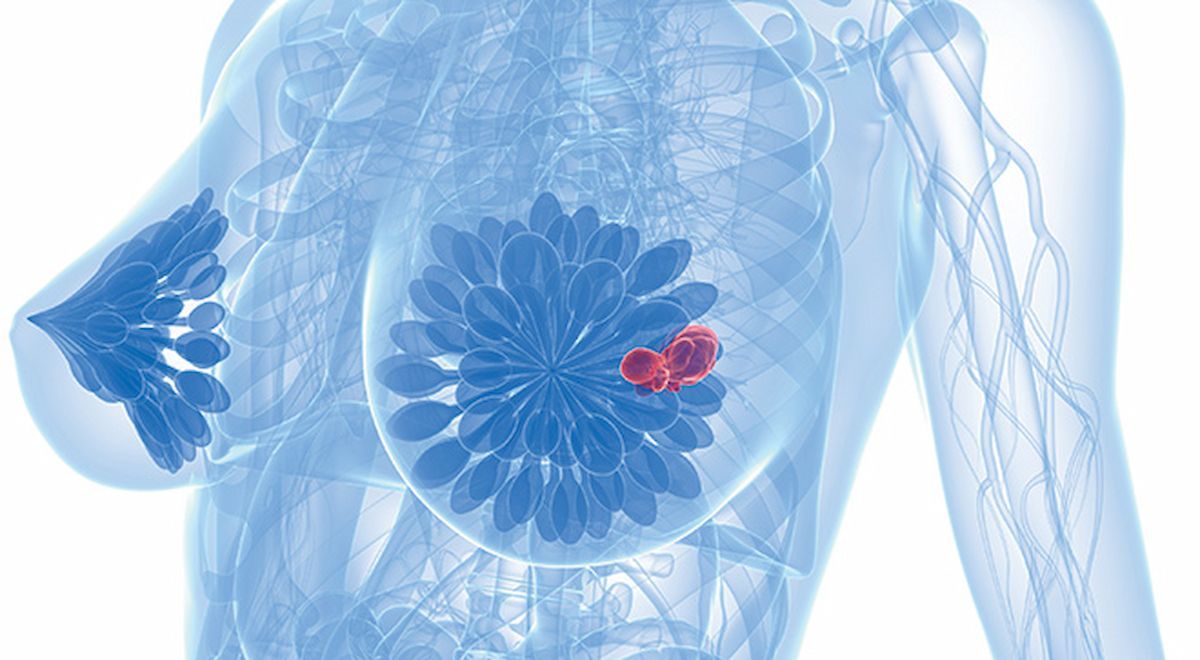Ribociclib Combo Improves iDFS in HR+/HER2– Early Breast Cancer
Data from the NATALEE trial show that ribociclib may benefit a broad population of patients with early breast cancer who have an increased risk of recurrent disease.
“The NATALEE trial showed that ribociclib treatment benefits a broad population of patients with early breast cancer who are at increased risk for recurrence," according to the study authors.

Combining ribociclib with a nonsteroidal aromatase inhibitor (NSAI) significantly improved invasive disease-free survival (iDFS) for patients with hormone receptor–positive, HER2-negative stage II or III early breast cancer, according to results from the phase 3 NATALEE trial (NCT03701334).
The iDFS rate at 3 years was 90.4% in the combination arm and 87.1% with an NSAI alone (HR, 0.75; 95% CI, 0.62-0.91; P = .003). Similarly, the 3-year recurrence-free survival rate was 91.7% in the combination arm vs 88.6% with an NSAI alone (HR, 0.72; 95% CI, 0.58-0.88).
“In the NATALEE trial, we examined CDK4/6 inhibition in HR-positive, HER2-negative disease by evaluating the addition of 3 years of ribociclib treatment to a standard NSAI as adjuvant therapy in a broad population of patients with early breast cancer,” the study authors wrote. “The NATALEE trial showed that ribociclib treatment benefits a broad population of patients with early breast cancer who are at increased risk for recurrence.”
A total of 5101 patients were enrolled and randomly assigned to either the combination (n = 2549) or the NSAI-alone arm (n = 2552). Patients were given 400 mg of oral ribociclib once daily for 21 days followed by 7 days off administered over 36 months. For the NSAI portion, letrozole (Femara) was administered at 2.5 mg orally once daily, or anastrozole was given at 1 mg orally once daily continuously for 60 months.
Most patients were White (73.4%). At the study cutoff, most were still receiving ribociclib plus an NSAI (77.8%) or receiving an NSAI alone (71.6%). Of those enrolled on the combination arm, 20.2% completed 3 years of treatment with ribociclib, 45.0% continued to receive ribociclib, and 56.8% had completed at least 2 years of combination therapy.
The median duration of follow-up was 34 months, and the median duration of exposure was 30 months for both arms. In the combination group, the median duration of exposure to ribociclib was 27 months.
The second interim analysis for iDFS was conducted after 426 events were reported. The median duration of follow-up was 28 months. The risk of invasive disease, recurrence, or death was 25.2% lower in the combination arm than with an NSAI alone. Distant recurrences occurred in 4.7% and 6.7% in the combination and NSAI arms, respectively. At the time of data cutoff, 2.4% of patients in the combination arm and 2.9% in the monotherapy arm had died after a median follow-up of 30 months for overall survival (HR, 0.76; 95% CI, 0.54-1.07).
It was noted that at least 1 adverse effect (AE) occurred in patients in both treatment arms (97.9% vs 87.1%). Serious AEs occurred in 13.3% vs 9.9%, and AEs leading to discontinuation of ribociclib occurred in 18.9%.
The most common any-grade AEs that led to discontinuation included liver-related events (8.9% vs 0.1%) and arthralgia (1.3% vs 1.9%). Grade 3 or higher liver-related AEs occurred in 8.3% of patients in the combination arm vs 1.5% for those receiving NSAI alone.
Deaths were reported in 2.4% of the combination arm vs 3.0% in the NSAI arm. Of note, no deaths were deemed to be related to study treatment. In the combination arm, 19 patients died without progression or recurrence vs 13 in the NSAI arm. While on treatment or within 30 days of the last dose, 17 and 9 patients in each respective arm died.
Reference
Slamon D, Lipatov O, Nowecki Z, et al. Ribociclib plus endocrine therapy in early breast cancer. N Engl J Med. 2024;390(12):1080-1091. doi:10.1056/NEJMoa2305488